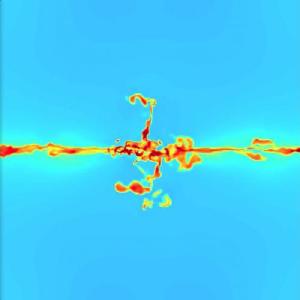Blog
Mix It Up
5 September 2014
When we look at a cluster of stars, we find that they are chemically similar. That is, the ratio of different elements (or metals in astronomy lingo) in various stars are basically the same. This is pretty much what we expect, since these stars all formed in the same stellar nursery, and haven’t drifted apart from each other. Just as human siblings share similarities due to their common genetic origins, sibling stars share chemical similarities due to their common origin. But what about stars with a common origin that scatter across the galaxy? Do they have a common chemical fingerprint?
The answer to this question has generally been “it depends.” All stars originating from a common stellar nursery would have some broad similarities, but just how strong those similarities are depends on the complex physics of turbulent gas and dust. For example, we know that objects in our solar system have different chemical fingerprints due to the location of their birth within the solar system. In asteroids, for example, we see that they are clustered into chemically similar “families,” which is one indication that they aren’t the result of a destroyed planet between Mars and Jupiter.
 Feng, Yi, and Mark R. Krumholz
Feng, Yi, and Mark R. KrumholzStellar nursery clouds form from the remnants of multiple supernovae and the like, so a similar effect could be seen in stars. If, for example, proto-stars in a stellar nursery disperse quickly, before the material within the nursery had a chance to mix together really well, then they could have rather distinct chemical fingerprints. If, on the other hand, the clouds of the stellar nursery are thoroughly mixed before proto-stars form, then they would be chemically similar.
Now a new paper in Nature shows that progenitor clouds can mix quite rapidly due to turbulent motion.1 The team looked at computer simulations of stellar nurseries and star formation, and found that they are highly mixed early on. Not only that, the level of mixing within a stellar nursery is basically the same regardless of the number of stars it produces. So a cloud where only about 10% of its mass forms into stars is just as mixed as one where 50% of the mass produce stars. The greater the star production, the more widely the resulting stars tend to disperse, so this means that even widely spread stars will be chemically similar.
This means that when we find stars with very similar chemical signatures, we have a pretty good confidence that they could have a common origin. Knowing this, we can better understand just how stars disperse from the stellar nursery after they form.
Feng, Yi, and Mark R. Krumholz. “Early turbulent mixing as the origin of chemical homogeneity in open star clusters.” Nature 513.7519 (2014): 523-525. ↩︎